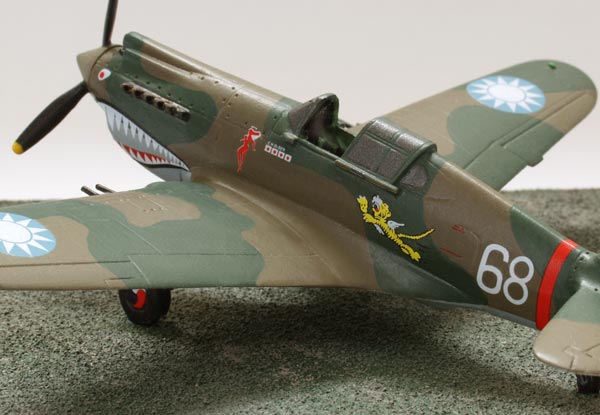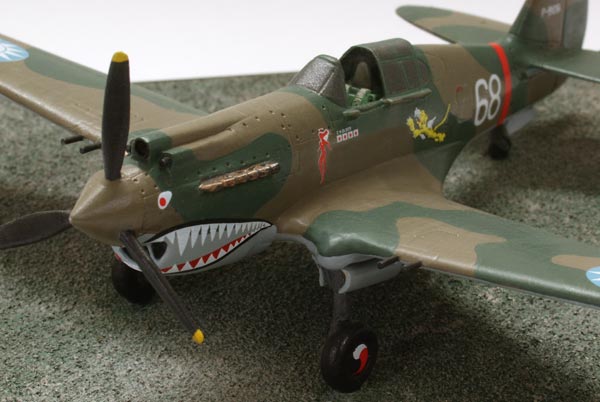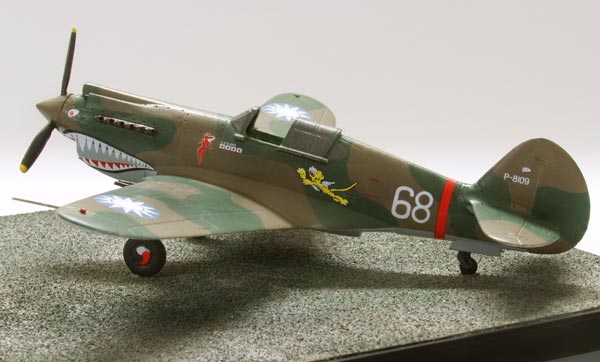Curtiss Hawk
Curtiss Hawk ’68’ CAF serial P-8109
3rd Sqn, A.V.G. ‘Flying Tigers’ Flt Ldr Charles Older, China, May 1942.
The Curtiss P-40 was developed as an inline-engined version of the Curtiss Hawk 75/P-36 fighter of the late 1930s, the new powerplant being an Allison V-1710 of just over 1,000 hp. The Americans, when they used a name rather than a designation, called all the variants Warhawk; early versions up to the P-40C were known to the RAF, who used them mostly in the Middle East, as the Tomahawk, and it was this variant that was flown against the Japanese in China by the celebrated “Flying Tigers”. These aircraft were diverted from an RAF Tomahawk order, and wore the “British” green/brown camouflage colours. The Allison engine was particularly suited to low-level operations, and while in the European theatre the aircraft’s usual role was reconnaissance or ground attack, where it earned a reputation as a workmanlike and reliable aircraft, in the Far East as at Pearl Harbor it was perforce used as an interceptor.
The 3rd Squadron AVG carried distinctive markings, in addition to the sharkmouth adopted from the Tomahawks of 112 Squadron, RAF. Flt.Ldr. Charles Older’s name was painted under the canopy, and one of the red and white “Hell’s Angels” figures of Stanley Regis. January 1942 saw red/white/blue “pinwheels” painted on the undercarriage covers, and when sometime after March 1942 the Disney “Flying Tiger” design was added it carried five kill markings. By the end of May they had been replaced by ten smaller flags.
Scale 1:72 Wingspan 6.22″ (158 mm)
Base size 6.37″ (162 mm) square (No. 4)
Weight not including base 8.25 ozs (235 grams)




